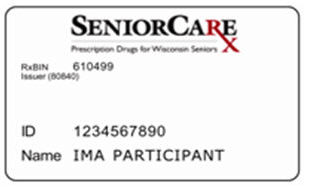Release 19-01
33.5 Benefit Period
33.5.1 SeniorCare Benefit Period Introduction
The benefit period for SeniorCare is 12 consecutive months. The benefit period and eligibility remain intact unless the member:
-
Moves out of state,
-
Reapplies (33.11 Re-Application),
-
Requests to withdraw from the program (33.12 Early Termination), or
-
Dies.
Once eligibility has been established, any changes in income will not be considered until the next renewal, unless the individual reapplies for a new benefit period.
33.5.2 ID Cards
When an applicant is found eligible for SeniorCare, he or she is mailed a plastic SeniorCare ID card and information about how to use it. SeniorCare members who renew their eligibility will continue to use their original card.
SeniorCare members must present their SeniorCare card to their pharmacy provider. The card does not show enrollment dates. The pharmacy provider will verify the member’s enrollment at each visit.
If SeniorCare members have questions regarding their eligibility status or need a replacement SeniorCare card, they should call the SeniorCare Customer Service hotline at 1-800-657-2038.

33.5.3 Eligibility Begin Date
SeniorCare eligibility begins on the first day of the month following the month in which all eligibility requirements have been met. This includes receipt of a completed application and enrollment fee.
Exception: SeniorCare eligibility begins the day after Medicaid eligibility ends if a SeniorCare application is submitted prior to the Medicaid termination date and all eligibility requirements are met.
|
Example 1: Carol applies for SeniorCare on September 19th and meets all eligibility requirements. Her application is processed on October 10th, and eligibility is confirmed the same day. Carol’s benefit period is from October 1st through September 30th. |
|
Example 2: William applied for SeniorCare on September 19th but did not submit the enrollment fee with his application. His eligibility pends and a notice is issued. William submits the fee on October 1st and eligibility is confirmed the same day. William’s benefit period is from November 1st through October 31st. |
|
Example 3: Mary is notified that Medicaid eligibility will end on November 30th because her assets exceed the program limit. She applied for SeniorCare on November 29th and will meet all SeniorCare eligibility requirements on December 1st (when she is no longer a full-benefit Medicaid member). Mary’s benefit period is from December 1st through November 30th. |
Note: If a gap in coverage of not more than one month occurs due to an agency error, eligibility for a new 12 month benefit period begins the first of the month the completed application is received and all eligibility requirements are met, including payment of the annual enrollment fee.
|
Example 4: Harold’s Renewal Application was mailed to him on December 13th to be completed for his new benefit period that would begin February 1st. The Renewal Application was mailed to the last known address in CARES which belonged to Harold’s wife Mary who was in a nursing home. Mary passed away on May 2nd of this year and although the IM worker ended her Medicaid eligibility, the case address was not updated in CARES. Harold has not moved, so he was not required to report a change of address to the SeniorCare program. Due to the incorrect address, Harold did not receive the Renewal Application form to complete until late in January. The completed Renewal Application was received by the SeniorCare program on February 10th, along with a letter explaining why it was late. Harold’s new SeniorCare benefit period is February 1st through January 31st, since the one month gap in coverage was due to an agency error. |